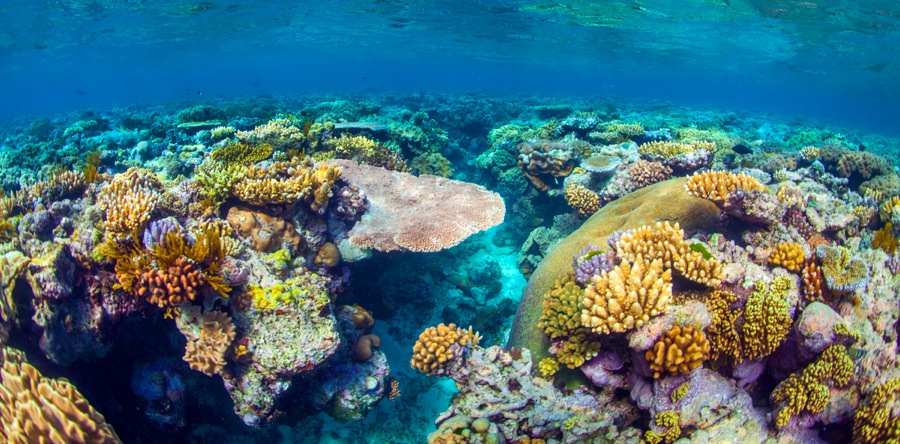Hey there, fellow ocean enthusiast! Dive into the mesmerizing world of the Great Barrier Reef with me as we uncover fascinating fun facts about this natural wonder. Let’s explore the incredible marine life, vibrant corals, and the unique ecosystem that makes the Great Barrier Reef an absolute marvel of nature.
Dive into the Wonders of the Great Barrier Reef: Fascinating Fun Facts
The Great Barrier Reef is a breathtaking natural wonder that stretches over 2,300 kilometers along the coast of Queensland, Australia. It is the world’s largest coral reef system, home to an incredible diversity of marine life and ecosystems. Spanning an area of over 344,400 square kilometers, the Great Barrier Reef is visible from outer space and is a UNESCO World Heritage Site.
The reef is composed of over 2,900 individual coral reefs and 900 islands, making it a complex and intricate ecosystem. It is a haven for thousands of species of fish, mollusks, starfish, turtles, dolphins, and sharks. Additionally, the reef provides a rich feeding ground for humpback whales during their annual migration.
The Great Barrier Reef is not just a natural wonder, but also a major tourist attraction, drawing millions of visitors each year who come to dive, snorkel, and explore its wonders. It offers unparalleled opportunities for nature enthusiasts and scientists to study and appreciate the beauty and complexity of marine life.
Unfortunately, the Great Barrier Reef faces numerous threats, including climate change, pollution, and overfishing. Efforts to conserve and protect this magnificent ecosystem are ongoing, as it is essential to preserve its beauty and ecological value for future generations to experience and cherish.
Most popular facts
The Great Barrier Reef is the world’s largest coral reef system, stretching over 2,300 kilometers (1,400 miles) along the coast of Queensland, Australia.
The Great Barrier Reef is the world’s largest coral reef system, stretching over 2,300 kilometers (1,400 miles) along the coast of Queensland, Australia.
It is composed of over 2,900 individual reefs and 900 islands.
The Great Barrier Reef is composed of over 2,900 individual reefs and 900 islands.
The Great Barrier Reef is home to a diverse range of marine life, including over 1,500 species of fish and 411 types of hard coral.
The Great Barrier Reef is home to a diverse range of marine life, including over 1,500 species of fish and 411 types of hard coral.
This natural wonder is visible from outer space and is a UNESCO World Heritage site.
The Great Barrier Reef is visible from outer space and is a UNESCO World Heritage site.
The reef is estimated to be around 20 million years old, making it one of the most ancient ecosystems on Earth.
The reef is estimated to be around 20 million years old, making it one of the most ancient ecosystems on Earth.
It plays a crucial role in protecting coastal areas from erosion and storm damage.
Vegetation plays a crucial role in protecting coastal areas from erosion and storm damage.
The Great Barrier Reef supports a thriving tourism industry, attracting millions of visitors each year for activities such as snorkeling, diving, and boat tours.
The Great Barrier Reef supports a thriving tourism industry, attracting millions of visitors each year for activities such as snorkeling, diving, and boat tours.
One of its most famous inhabitants is the green sea turtle, which uses the reef as a nesting ground.
The green sea turtle uses the reef as a nesting ground.
The reef also serves as a breeding area for humpback whales, who migrate there annually to give birth and nurse their calves.
The reef serves as a breeding area for humpback whales, who migrate there annually to give birth and nurse their calves.
Coral bleaching, caused by rising sea temperatures, poses a significant threat to the health of the Great Barrier Reef.
Coral bleaching poses a significant threat to the health of the Great Barrier Reef due to rising sea temperatures.
The traditional owners of the Reef are the Aboriginal and Torres Strait Islander peoples, who have been its custodians for thousands of years.
The traditional owners of the Reef are the Aboriginal and Torres Strait Islander peoples, who have been its custodians for thousands of years.
The Great Barrier Reef Marine Park Authority is responsible for managing and protecting the reef’s ecosystems.
The Great Barrier Reef Marine Park Authority is responsible for managing and protecting the reef’s ecosystems.
In addition to its ecological significance, the Great Barrier Reef contributes billions of dollars to the Australian economy each year.
The Great Barrier Reef contributes billions of dollars to the Australian economy each year.
The reef has inspired countless artists, writers, and conservationists with its beauty and biodiversity.
The reef has inspired countless artists, writers, and conservationists with its beauty and biodiversity.
Efforts are underway to combat the impacts of climate change, pollution, and overfishing on the Great Barrier Reef to ensure its preservation for future generations.
Efforts are underway to combat the impacts of climate change, pollution, and overfishing on the Great Barrier Reef to ensure its preservation for future generations.
In conclusion, the Great Barrier Reef is a fascinating natural wonder that holds some incredible fun facts. Its biodiversity, size, and ecological significance make it an important site for conservation and research, while also offering awe-inspiring experiences for visitors. The reef’s vibrant marine life and unique ecosystem truly make it a must-see destination for anyone interested in the natural world.
